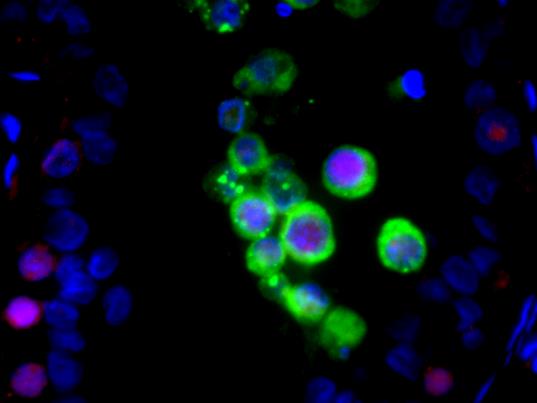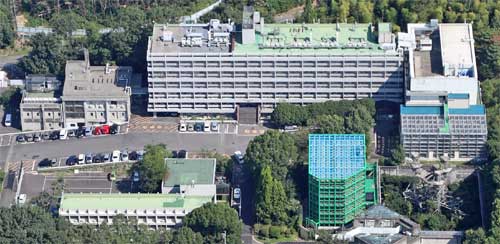WEEK TWO - JUNE 21
Konnichi wa from the Primate Research Institute – Week 2 (June 21)
In my previous post, I left off with the image of me snacking on a macha (green tea) Kit-Kat before getting on the Shinkansen (bullet train) to the Primate Research Institute. Hurtling through the Japan countryside at 320 km/h (or 200mph, just add 60%) is a breathtaking experience, especially when it feels as if you’re gliding on ice. Before I could settle in though, it was already time for me to to a local Inuyama train, the mountainous town that the Primate Research Institute calls home.
FYI, Arrived at the PRI
Upon arriving at the PRI, I was immediately greeted by several primates (albeit Homo sapiens) including Dr. Imamura and his research team, Dr. Hirai, the familiar face of Dr. Tosi – my adviser from Á˝ĐÔÉ«ÎçŇą – and several others from the PRI’s Molecular Biology department. The facilities at the PRI including the laboratories, offices, and even the dormitory are extremely impressive. The PRI is truly a sort of tengoku (heaven) for a biological anthropologist. Most importantly, the PRI places great emphasis on a multi-disciplinary and international approach to biological anthropology and primatology; faculty from the world over are studying every aspect of primate biology ranging from cognitive neuroscience to social systems to molecular biology.
The PRI from above! The main laboratories and offices are in the large building at the top of the photo. The dormitory for international researchers (and lunch cafeteria!) is the building at the lower left.
Hitting the Ground Running
Like a true bipedal hominin, I took my first steps at the PRI with one foot in front of the other. It didn’t take long, though, to get into the laboratory and start learning new techniques. In order to begin the Japanese macaque studies, it is essential that I learn and practice several advanced molecular biology techniques. On my second day, for example, I practiced immunohistochemistry with a new lab mate, Ito-san. Immunohistochemistry is the process of visualizing certain proteins in a tissue (histo = tissue) by using a set of specific antibodies, hence the prefix -immuno. This technique will allow us to visualize, both spatially and temporally, a profile of genes that are either expressed or silenced during the seasonal spermatogenesis of the Japanese macaque.

After staining the tissue, Ito-san showed me how to use the fluorescent microscope in order to see the expression of our target protein.


 This is one kind of data that we will produce for our Japanese macaque project. In both pictures, we see stained green for PIWIL, a regulatory protein that maintains proper spermatogenesis by silencing certain mRNAs.
This is one kind of data that we will produce for our Japanese macaque project. In both pictures, we see stained green for PIWIL, a regulatory protein that maintains proper spermatogenesis by silencing certain mRNAs.
After my introduction to immunohistochemistry, our research team outlined the rest of our experimental procedures for the summer, which includes another technique called Reverse Transcription – Polymerase Chain Reaction (RT-PCR). This technique is a little more familiar to me considering I perform standard and quantitative PCRs at Á˝ĐÔÉ«ÎçŇą, and I’m looking forward to adding this method to my “molecular biology toolkit”. Homo habilis would be proud! By the end of this week, our team will have designed nearly 50 primers – a small DNA sequence that binds to your gene of interest – for our spermatogenesis genes. Next week, I’ll get into the details of RT-PCR and why it is awesome and important for understanding molecular spermatogenesis!
From Culturing Cells to Enculturating Myself
My first couple days at the PRI were absolutely awesome – the Molecular Biology department treated me, Dr. Tosi, and Mita (another international researcher from Java) to delicious dinners and even a welcome party…with cake and iced coffee! Over the weekend, I went with Ito-san to the historic Inuyama Castle, then we joined up with several other labmates for ramen followed by an evening trip to an onsen (Japanese hot spring).
I am extremely grateful for being welcomed to the PRI in such a warm fashion given my new colleagues are undoubtedly busy. They are fantastic hosts and I look forward to the rest of the summer!


(Left) Several colleagues from the Molecular Biology section took Dr. Tosi and me to Tenkaippin Ramen for dinner. This is a rich, creamy kind of ramen with a thick broth. (Right) Our section had a lunch party to celebrate the new international researchers plus several birthdays in the section.

Ito-san and I climbed to the top of Inuyama castle, snapped a selfie, then enjoyed some matcha ice cream before heading to ramen with the other labmates. This is Morita ramen which has a lighter broth than Tenkaippin and also incorporates eggs; best dish of the week!
That’s about it for my 1st week at the PRI! Thank you for reading and keeping up with my research and cultural experiences during my EAPSI fellowship. Next week, our team will be jumping into the RT-PCR portion of our project, plus see how I fare in getting a haircut in town! Until next week, matane!
This research is funded by the National Science Foundation East Asia and Pacific Summer Institutes for U.S. Graduate Students (EAPSI) in collaboration with the Japan Society for the Promotion of Science (JSPS).




